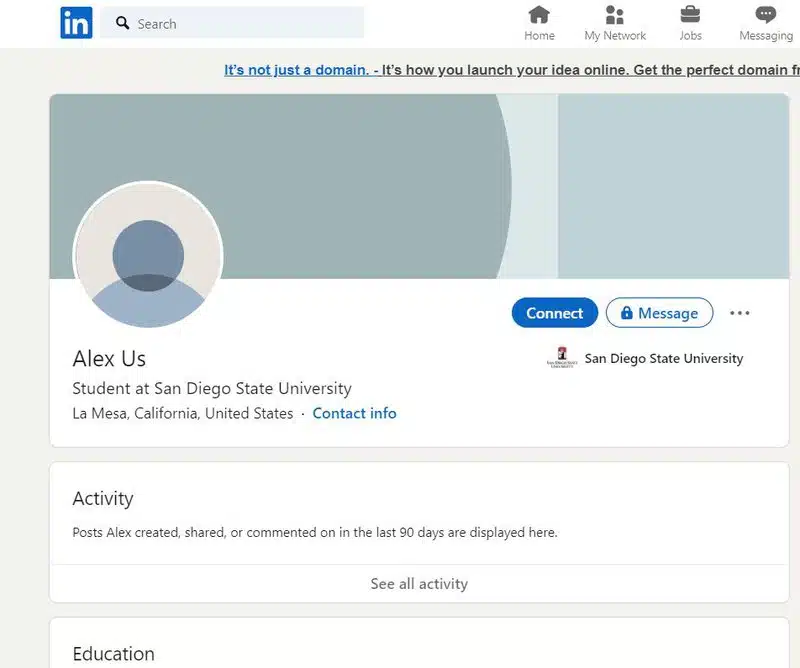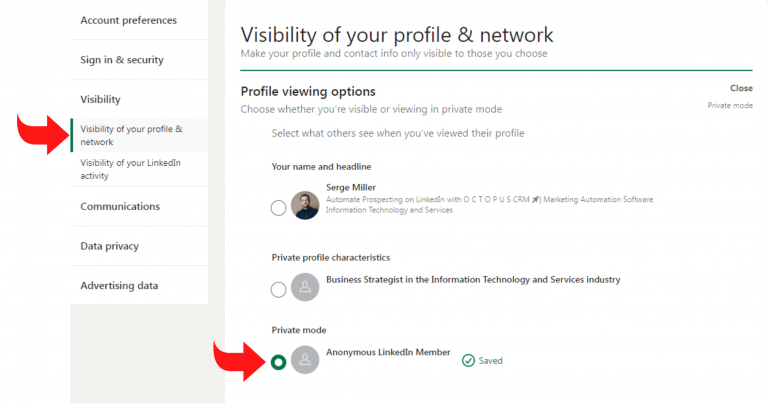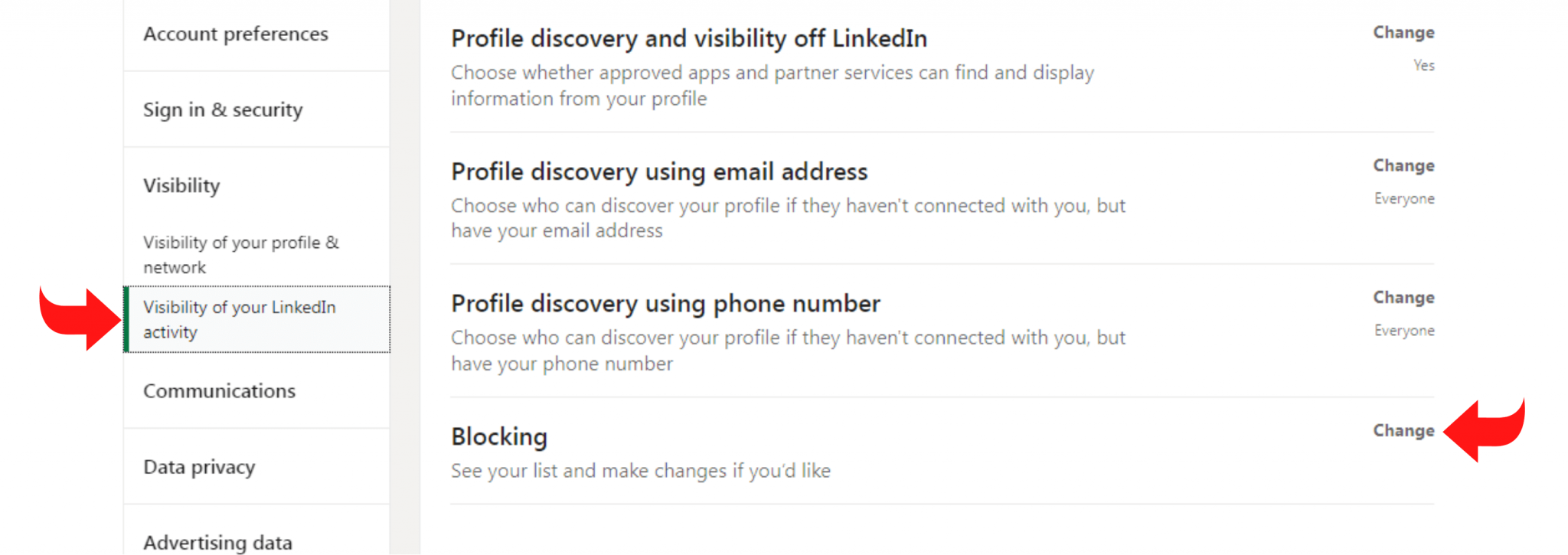LinkedIn is an amazing platform for networking, but sometimes, interactions can become less than pleasant. Whether it's spammy messages or unprofessional behavior, knowing how to block someone can help you maintain a positive experience. In this guide, we'll explore why you might need to block a connection and how to find the profile of the person you want to block.
Understanding the Need to Block Connections on LinkedIn

Block someone on LinkedIn? It might sound drastic, but it's a necessary tool in your professional toolkit. Here are a few reasons why you might want to consider this action:
- Inappropriate Behavior: If a connection is sending you harassing or inappropriate messages, blocking them can provide immediate relief.
- Spam Messages: Unwanted solicitations can clutter your inbox. Blocking spammers helps keep your messages relevant.
- Unprofessional Conduct: If someone is consistently negative or toxic in their interactions, it might be best to cut ties.
- Privacy Concerns: If you feel uncomfortable with a connection seeing your updates or profile, blocking can enhance your privacy.
Remember, blocking someone on LinkedIn is not just about severing ties; it's about creating a more positive environment for your professional life. Just like in real life, it’s perfectly acceptable to protect your mental space from negativity.
Also Read This: How to Change My Email Address on LinkedIn: A Quick Guide to Updating Your Email
How to Find the Profile of the Person You Want to Block

Blocking someone starts with locating their profile. Here’s how to do it step-by-step:
- Use the Search Bar: At the top of your LinkedIn homepage, you'll find a search bar. Type in the name of the person you want to block. If their name is common, you might need to look for additional identifiers like their job title or location.
- Check Your Connections: If you’re connected, head over to your connections list. Click on "My Network" and then "Connections." Scroll through or use the search feature to find the person.
- Explore Your Messages: If you’ve had previous conversations with them, you can find their profile through your message history. Just click on their name in the chat, and it will take you to their profile.
- Search Through Groups: If you share any groups with the person, browse through these groups to find their profile. Just click on their name from the group members list.
Once you’ve found the right profile, you’re ready to take action. Just remember, being able to block someone is empowering—use it wisely!
Also Read This: How to Download Your Resume from LinkedIn: A Detailed Guide
3. Step-by-Step Instructions to Block Someone on LinkedIn

Blocking someone on LinkedIn is a straightforward process. Whether it’s an unwanted connection or someone who’s become bothersome, here’s how to do it:
- Log into your LinkedIn Account: Start by opening LinkedIn and logging into your account. Make sure you’re on your homepage.
- Find the Profile of the Person You Want to Block: You can either search for their name in the search bar or navigate to their profile through your connections.
- Access the More Options Menu: Once on their profile, look for the “More” button (three dots) located near their profile picture. Clicking this will open a dropdown menu.
- Select “Report/Block”: In the dropdown menu, you’ll see the option for “Report/Block.” Click on it to proceed.
- Choose “Block [Name]”: A new window will pop up with options. Select “Block [Name]” to confirm your decision.
- Confirm Your Action: LinkedIn will ask you to confirm that you really want to block this person. Click “Continue” to finalize the block.
And there you have it! The person is now blocked and won’t be able to see your profile, send you messages, or interact with your posts. If you ever change your mind, you can always unblock them by following similar steps.
Also Read This: How to Remove a Connection on LinkedIn: A Guide to Managing Your LinkedIn Network
4. What Happens When You Block Someone on LinkedIn?
Blocking someone on LinkedIn comes with a few notable changes in your interaction dynamics. Here’s what you can expect:
- Profile Visibility: The blocked individual will no longer be able to view your profile. This means they can’t see your professional achievements, endorsements, or any of your activity on the platform.
- Messaging Restrictions: Once blocked, the person cannot send you messages. This can be a relief if someone has been sending you unwanted or spammy messages.
- Connection Status: If you were connected before blocking them, LinkedIn will automatically remove the connection. They will no longer appear in your connections list.
- No Notifications: The blocked individual won’t receive any notifications about your activity. For instance, if you change your profile picture or update your job status, they won’t be notified.
However, it’s important to note that blocking someone does not notify them directly that they’ve been blocked. They’ll just find themselves unable to access your profile and interact with you. This way, you can maintain your professional environment while keeping unwanted interactions at bay!
Also Read This: Can You Delete Messages on LinkedIn? How to Manage Conversations
5. Alternatives to Blocking: Managing Your Connections
Blocking someone on LinkedIn can feel a bit drastic, and sometimes, it’s not the only option to manage your connections effectively. If you're not quite ready to hit that block button, there are several alternatives you might consider that allow you to maintain a professional atmosphere while curating your network to fit your needs.
Here are some practical alternatives:
- Adjust Your Privacy Settings: You can customize who sees your profile and activity. Go to your settings and tweak your visibility options. This way, you can feel more secure without outright blocking someone.
- Remove Connections: If a connection is no longer relevant to your professional goals, consider removing them from your network. This action can be less confrontational than blocking and helps keep your circle relevant.
- Manage Notifications: If someone’s posts are cluttering your feed, you can simply unfollow them. This way, you won’t see their updates in your feed, but you’ll still remain connected. It’s a great way to maintain ties without the noise.
- Use Direct Messaging Wisely: If there’s a specific issue with a connection, sometimes a direct message can resolve things without needing to block. A simple conversation can often clear up misunderstandings.
- Curate Your Feed: LinkedIn allows you to choose who you want to see updates from. Take the time to curate your feed by following industry leaders and companies that align with your interests and professional goals.
These alternatives can not only help you manage your connections better but also foster a more positive LinkedIn experience. Remember, maintaining a professional online presence is as much about curating your network as it is about making connections.
6. Conclusion: Maintaining a Professional Network on LinkedIn
In the world of LinkedIn, your network is your net worth. Maintaining a professional and meaningful network can open doors to new opportunities, collaborations, and insights. Whether you decide to block someone or opt for alternative methods to manage your connections, what's crucial is to ensure your LinkedIn experience aligns with your professional goals.
Here are some key takeaways for maintaining a healthy LinkedIn network:
- Be Selective with Connections: Not every connection is worth keeping. Focus on individuals who add value to your network, whether through shared interests, potential collaborations, or industry insights.
- Engage Thoughtfully: Regularly engage with content that resonates with you. Like, comment, and share posts from people in your network. This helps strengthen connections and keeps you top-of-mind.
- Stay Professional: Always remember that LinkedIn is a professional platform. Keep your interactions respectful and constructive, even when you disagree.
- Evaluate Regularly: Take time to review your connections periodically. Ask yourself if each connection still aligns with your career aspirations and adjust accordingly.
- Don’t Hesitate to Disconnect: If a connection isn’t providing value or is causing discomfort, don’t hesitate to remove them. Your peace of mind and professional integrity should always come first.
By navigating your LinkedIn connections thoughtfully, you can build a robust network that not only reflects your professional persona but also propels you towards your career ambitions. Remember, it's all about quality, not quantity. Happy networking!
 admin
admin








